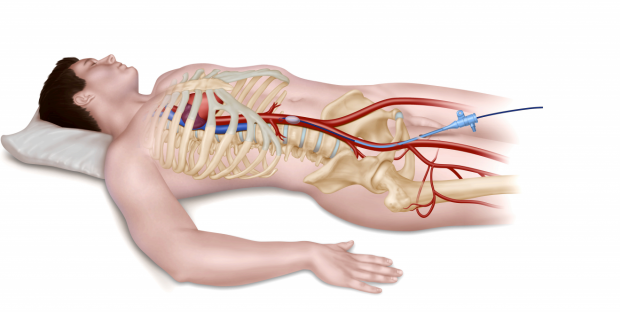An emergency treatment designed to save the lives of car crash victims is being tested in a £1.1million study by Aberdeen University.
The technique temporarily stops the blood flow to the lower parts of the body until patients can be taken to an operating theatre.
It is used to treat the type of life-threatening, bleeding injuries to the torso, which are often suffered by those involved in road smashes.
Known as REBOA (Resuscitative Endovascular Balloon Occlusion of the Aorta), it involves inserting an inflatable device into the body’s main artery through the femoral artery in the groin – crucially maintaining blood circulation to vital organs such as the heart and the brain.
Fatal traffic collisions occur more in the north-east than most other parts of Scotland.
In 2016, three people were killed in Aberdeen and 62 seriously injured while in Aberdeenshire there were 17 deaths and 129 serious injuries.
REBOA is currently used by trauma centres in the USA, Japan and parts of Europe, but in the UK it is so far only used in London.
The new trial will take place at 10 hospitals across England over the next four years, and will be organised by experts at Aberdeen University.
It will compare the survival rates of those who receive REBOA and those who do not, in order to establish whether or not it is an effective intervention.
Jan Jansen, a consultant in general surgery at Aberdeen University, is the chief investigator of the new study.
He said: “REBOA is quite a simple concept which many in the medical profession believe will be a tool that helps save more lives.
“The technology is not without its complications. Cutting off blood from half the body can only be done for so long, and you have to deal with the consequences of that, but with injuries this severe it can be a trade-off worth making.
“It’s important to stress that this procedure is only used in extreme cases where there is a real chance of the patient dying in the emergency department.
“Some early adopter teams have already started using this, but this trial will provide some thorough research that shows just how effective it is at saving lives.”
